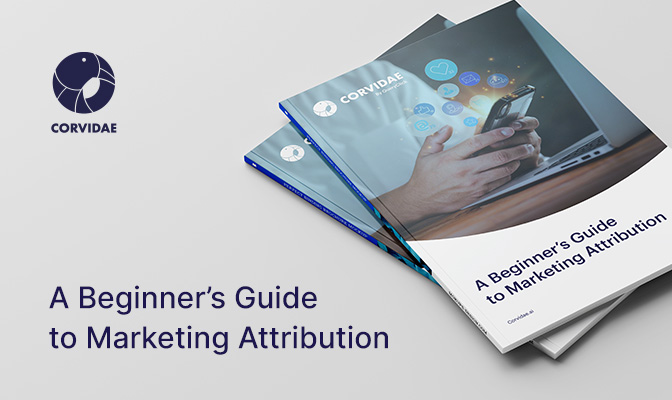How to Choose The Right Retail Attribution Model

Gartner surveyed over 400 marketing leaders and analytics practitioners to better understand the current approaches to marketing analytics that support marketing strategies to enable future growth and success.
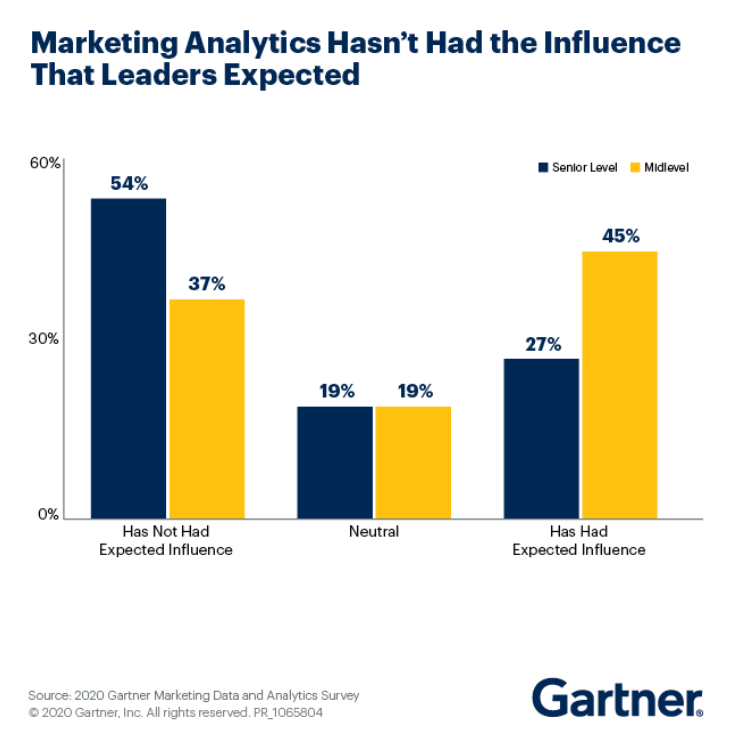
In the current retail environment, choosing the right attribution model is central to an effective marketing strategy. However, research by QueryClick points to the fact that 90% of those responsible for improving marketing ROI struggle to get their hands on the type of model they need to measure retail attribution effectively.
And the impact of this is echoed in Gartner data showing that 54% of executives think that marketing analytics hasn’t had the influence they expected on their business.
Limitations in existing attribution models
So, what is behind the issue?
Part of the answer for many retailers quite simply lies in the complete disconnect between the complexity of retail customer journeys – and the over-simplified nature of the attribution models they are using to try and interpret them.
Perhaps the best way to illustrate the point is to consider a single, typical retail customer journey and assess how some of the more common attribution models would analyse the activity.
Over-simplistic rules-based attribution
Take the example below, which is a higher value purchase – in this case a laptop – with a relatively long buying journey.
- A customer is interested in buying a laptop.
- They start their initial research through a web search on their mobile including a visit to a retailer’s website to learn more.
- A couple of days later they receive a regular monthly email from the same retailer and click a link to a review of the laptop on their website. It prompts them to conduct a store visit to assess the laptop which they do without buying.
- 3 weeks later they see a TV ad for the product which brings it back top of mind and they finally click a re-targeting ad to purchase it online a day later.
So how do some of the simpler and commonly used attribution models help retail marketers attribute conversion value in this case?
Last click model
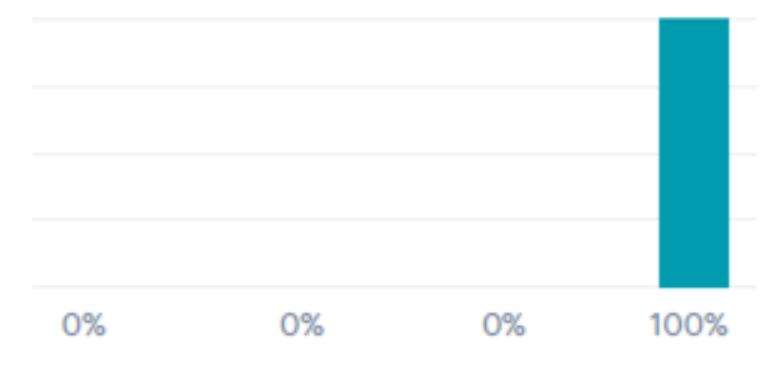
Last click is still widely used by retail marketers and allocates 100% conversion credit to the last customer touchpoint prior to purchase – in this case the re-targeting ad.
Simultaneously, it also allocates 0% credit to all other touchpoints. A gross over-simplification which skews effective marketing attribution markedly.
While Last click may have some relevance in very specific scenarios – for example where you are heavily focused on conversion right at the bottom of the funnel – it simply isn’t capable of handling complex retail customer journey attribution.
First click model
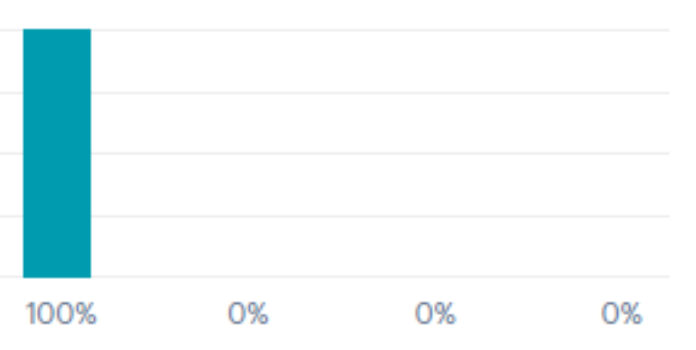
First-click attribution effectively flips this on its head.
Attributing 100% credit for conversion to the first touchpoint – in this case the initial web search for the laptop – as being the crucial determinant in the purchase decision.
So, in the same way that Last-Click creates an oversimplistic bias on the back end of the journey, First-Click does the same thing on the front end.
In addition to these single-click models there are also a range of multi-touch rules-based models to choose from including:
- Linear attribution
- U-shaped
- Time decay
- W-shaped
- Custom models
Whilst these models are a step on from single-click analyses – and would have allocated at least some attribution to the broader media touchpoints in our laptop purchase scenario above – they are still limited in their ability to measure retail attribution effectively.
Typically, they offer retailers channel-only attribution outcomes. And they also suffer from data quality issues relating to the limitations of the cookie and pixel-based approach to collecting data. Which renders up to 80% of the data they use incorrect.
More sophisticated data-driven and probabilistic approaches
Frustrations with the limitations and issues with the rules-based models above have led some retail marketers to explore more sophisticated attribution approaches including:
Statistical or data driven attribution
Data driven attribution models apply channel attribution that is determined by a weighting based approach. Using the data available to them.
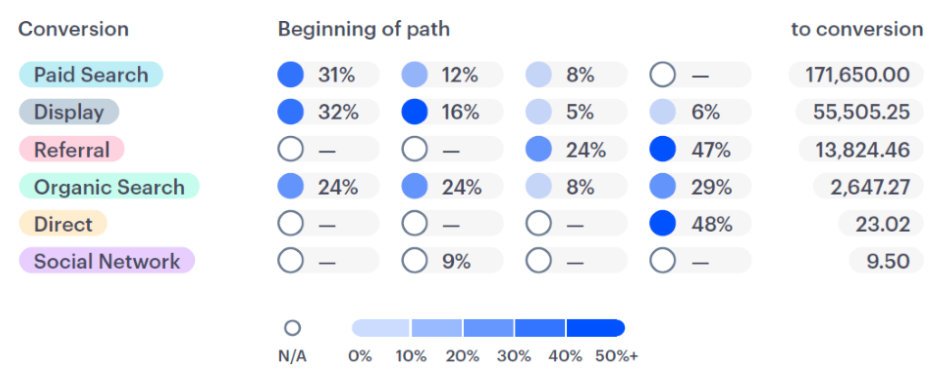
For example, even the free version of Google Analytics offers this functionality to retail marketers.
However, these types of models suffer from the very real limitation of using vendor specific tags and not being aware of data collected elsewhere.
In addition to encountering the same data quality challenge as the rules-based options discussed earlier.
Media mix modelling (MMM)
MMM applies statistical techniques to find incrementality in large data sets. Using mathematical techniques and often involving integrating panel data for offline media activity.
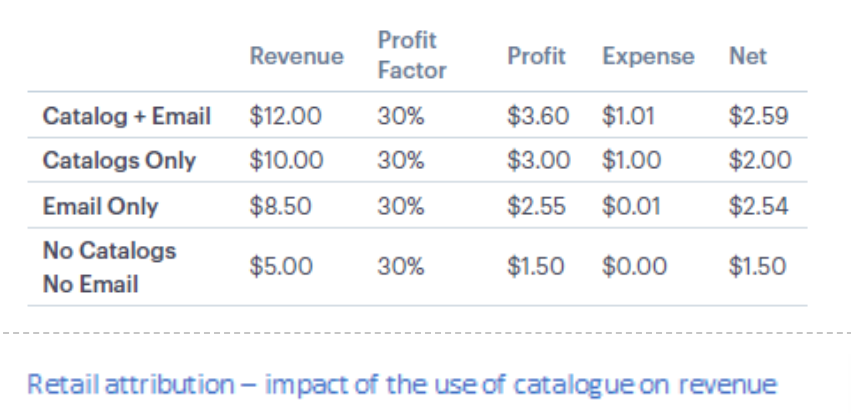
For example, the retail business on the right wanted to understand the incremental impact of using an offline catalogue.
By using MMM techniques – based on data analysis of media channel mix, customer cohorts, use of the catalogue and acquisition outcomes – they were able to identify a 2% incremental benefit from running offline catalogues with an email campaign.
Whilst MMM is useful – and can be used to answer specific time-bound attribution questions – the sheer complexity and volume of data needed to support it on an-ongoing basis make it an expensive attribution proposition.
Probabilistic modelling
Using probabilistic modelling techniques like Shapley and Markov chain, in conjunction with Machine Learning, it is also now possible to find an average incremental attribution value for touchpoints on all conversion paths that exist in a retail marketing customer journey.
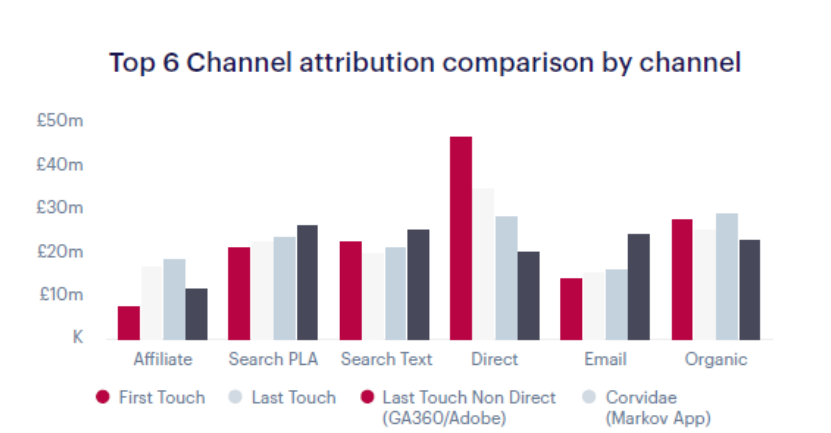
In this example, Corvidae was able to assess and more accurately attribute revenue contribution by channel for a well-known Online Fitness Retailer.
As you can see, compared to Last-Click Non Direct attribution (the rules model used by GA 360 and Adobe by default) channel attribution has changed by £39.9m. Given total turnover is only £136.7m across the measured channels for this retailer, this radically altered the ROI implications of media spend, particularly in Paid Search and PLA (Paid Search Shopping Ads) for the client.
Whilst these predictive model approaches are a huge step forward from the over-simplistic rules- based models mentioned earlier, they can also have their drawbacks including:
- they need to be re-modelled to provide more granular outcomes than just channel attribution
- they don’t work for smaller data sets
- they are not able to deliver on the elusive goal of understanding engagement and probability to convert – at an individual level
Which is where campaign level attribution comes in.
The emergence of campaign level attribution
Campaign (or Visit) level attribution combines many of the techniques above with Machine Learning and bleeding edge data science (including AI) to fix the incoming data being generated by analytics platforms – like Google Analytics – and joining data to any channel online or off.
This creates a fully attributed map of the customer journey that includes a scored value against every piece of marketing that the individual has engaged with. This can then be used to assess all retail marketing activity.
And the results from this type of attribution approach are hugely powerful.
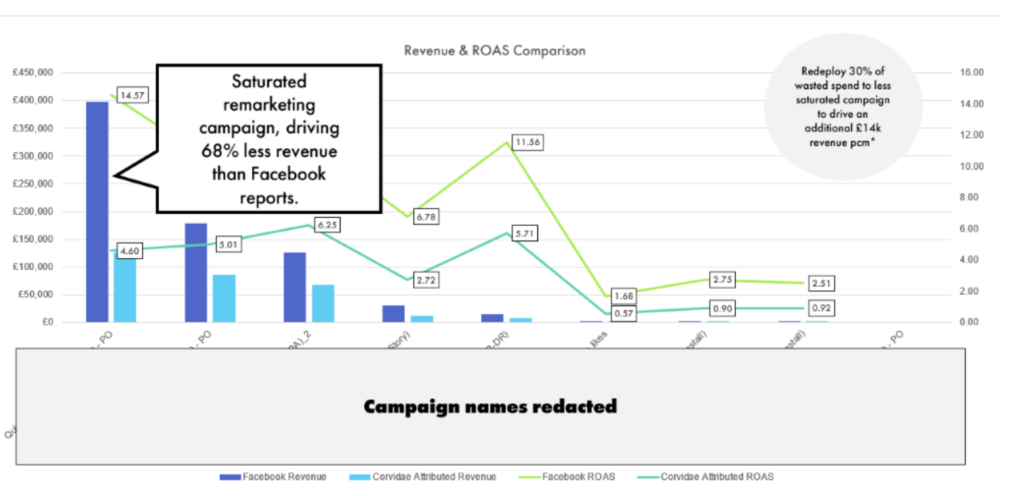
The graph above shows how Corvidae – our own attribution platform which uses campaign level attribution – was used by a leading online clothes retailer to rebuild Facebook channel data and identify saturated spend including identifying:
- that Facebook ad spend was in fact driving 68% less revenue than Facebook was reporting
- that redeploying 30% of spend from this campaign could generate an additional £14k revenue per month
It’s clear that retail marketers have challenges in getting their hands on the type of attribution models they need to be effective.
And limitations in rudimentary rules-based models like Last-click and First-click – and various extensions of the rules based approach – mean that they aren’t appropriate for the increasingly longer and more complex user journeys in retail purchases.
However, advances in Machine Learning and AI are making attribution right across the customer journey a reality and providing the type of visit level attribution that retailers need to impact ROI.
Find out more about our attribution solution for retail and eCommerce. Or download our Beginner’s Guide to Marketing Attribution below.
